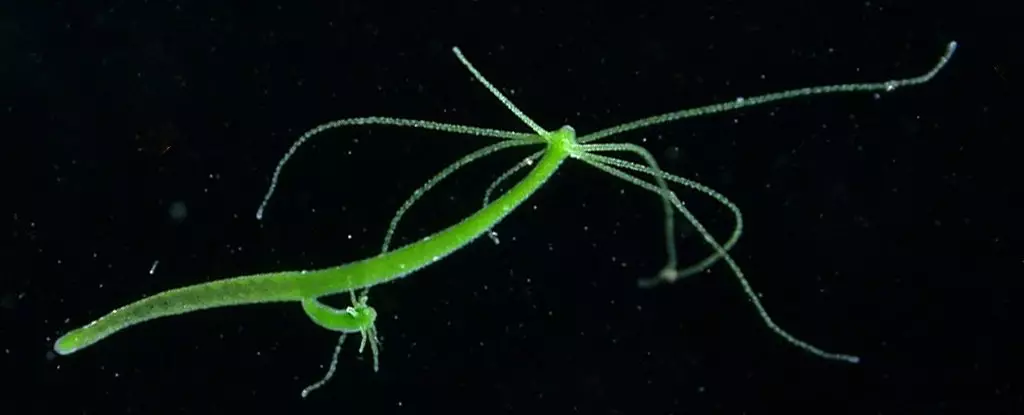Hunger is a primal instinct that guides the behavior of all living creatures, no matter how simple or complex they may be. While for most animals, the sensation of hunger is processed by the brain, researchers at the University of Kiel have discovered that even brainless creatures like hydra, freshwater jellyfish relatives, have a sophisticated nervous system that governs their hunger and satiety levels.
In the study conducted by zoologist Christoph Giez and his team, it was revealed that hydra possess not one, but two distinct nerve networks that function similarly to our central and peripheral nervous systems. The network responsible for digestion (N4) is located internally, while the network for sensing fullness (N3) is located externally. This division of labor within their nervous system allows hydra to regulate their feeding behaviors based on their metabolic state.
Through a series of experiments, researchers observed that after feeding, hydra displayed a decrease in attraction to light stimuli and a suppression of their natural movement patterns. This shift in behavior indicates that hydra have the ability to sense their internal state of fullness and adjust their actions accordingly. When the outer network of neurons (N3) was removed, hydra exhibited a loss of orientation towards light and an increased tendency to open their mouths for food, highlighting the inhibitory role of these neurons on feeding behavior.
The discovery of these complex nerve networks in hydra sheds light on the early evolution of animal nervous systems. Despite lacking a centralized brain, hydra demonstrate a sophisticated system for regulating appetite and behavior. While the physical connection between the two nerve networks remains elusive, researchers speculate that their communication is likely chemical in nature. With their remarkable regenerative abilities and resistance to aging, hydra continue to captivate scientists and offer valuable insights into the evolutionary origins of hunger.
The study on hydra’s nervous system illustrates the remarkable adaptability and complexity of even the most seemingly basic organisms. By unraveling the mechanisms behind hunger and satiety in brainless creatures, researchers are not only gaining a deeper understanding of evolutionary biology but also challenging traditional notions of neural sophistication. As we continue to explore the mysteries of the natural world, it is through studying creatures like hydra that we uncover the interconnectedness and intricacy of life itself.


Leave a Reply